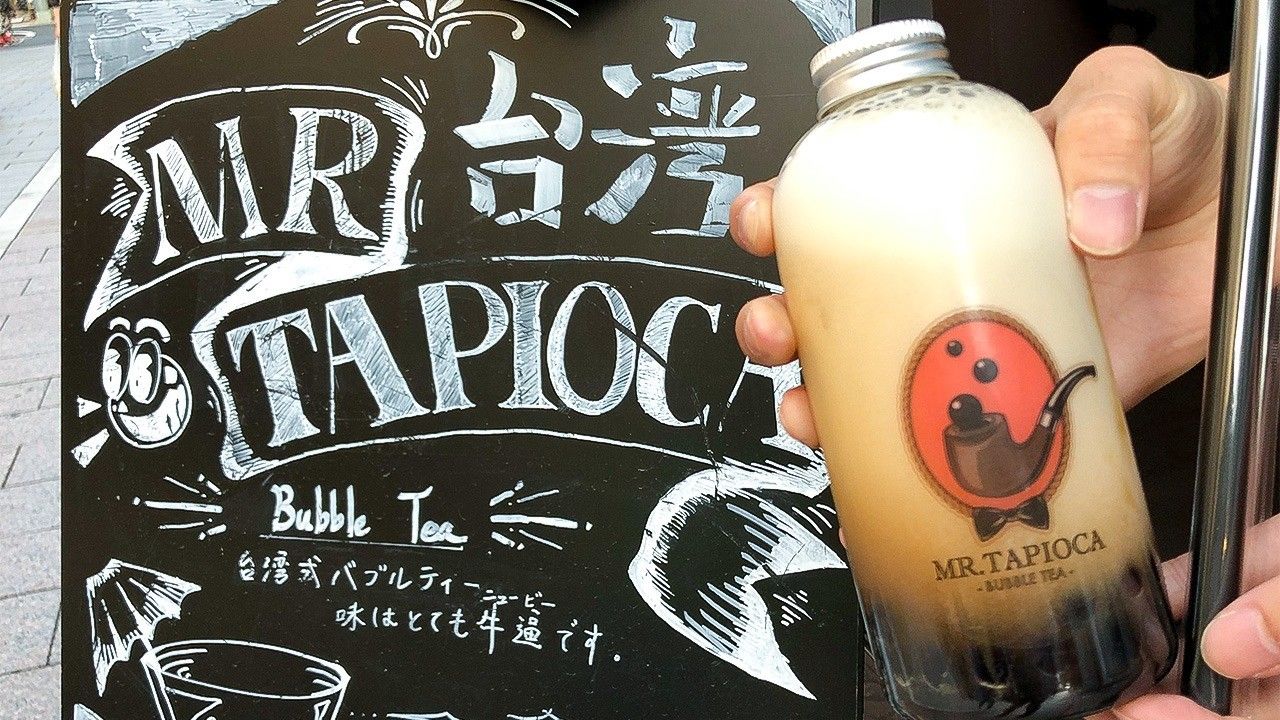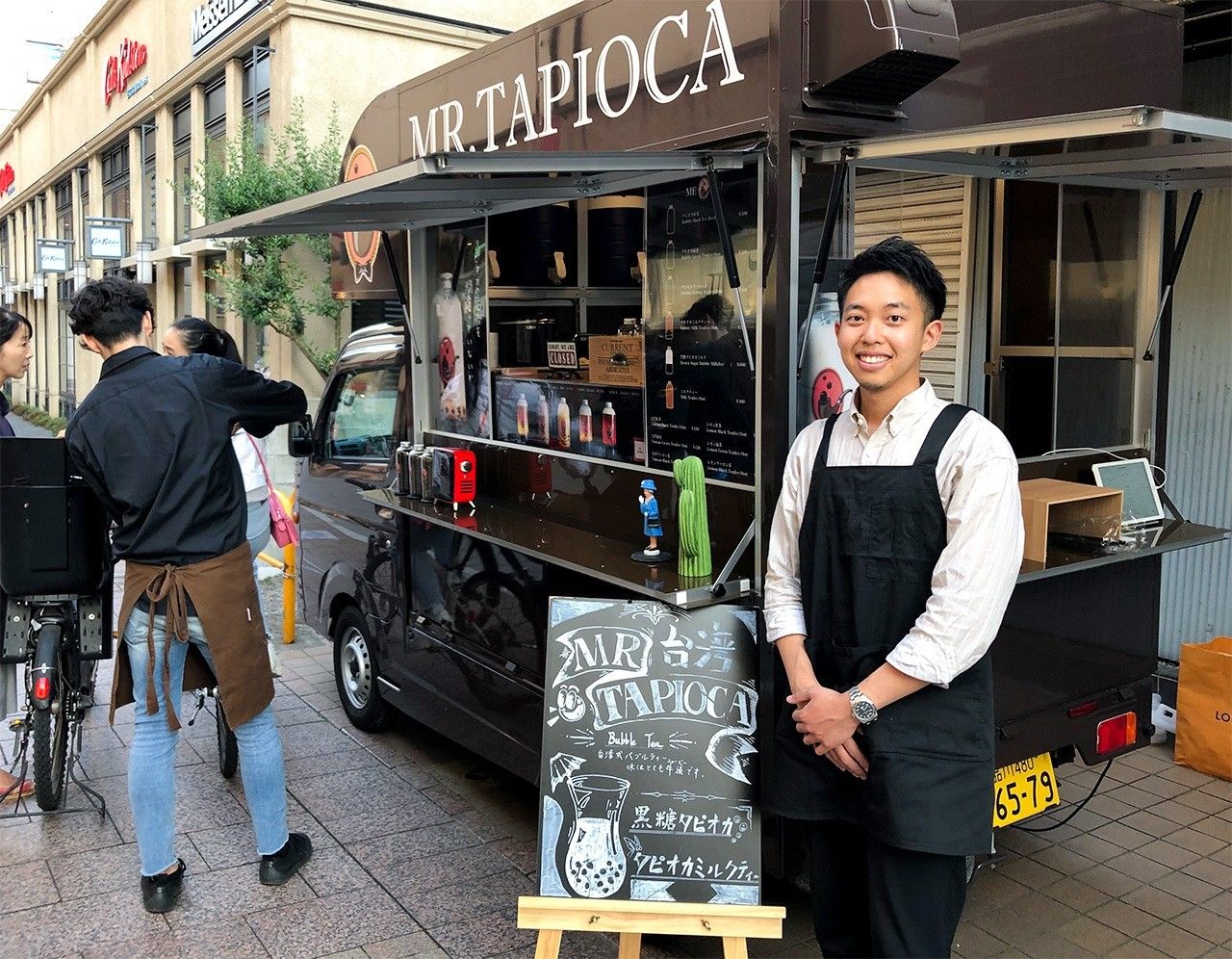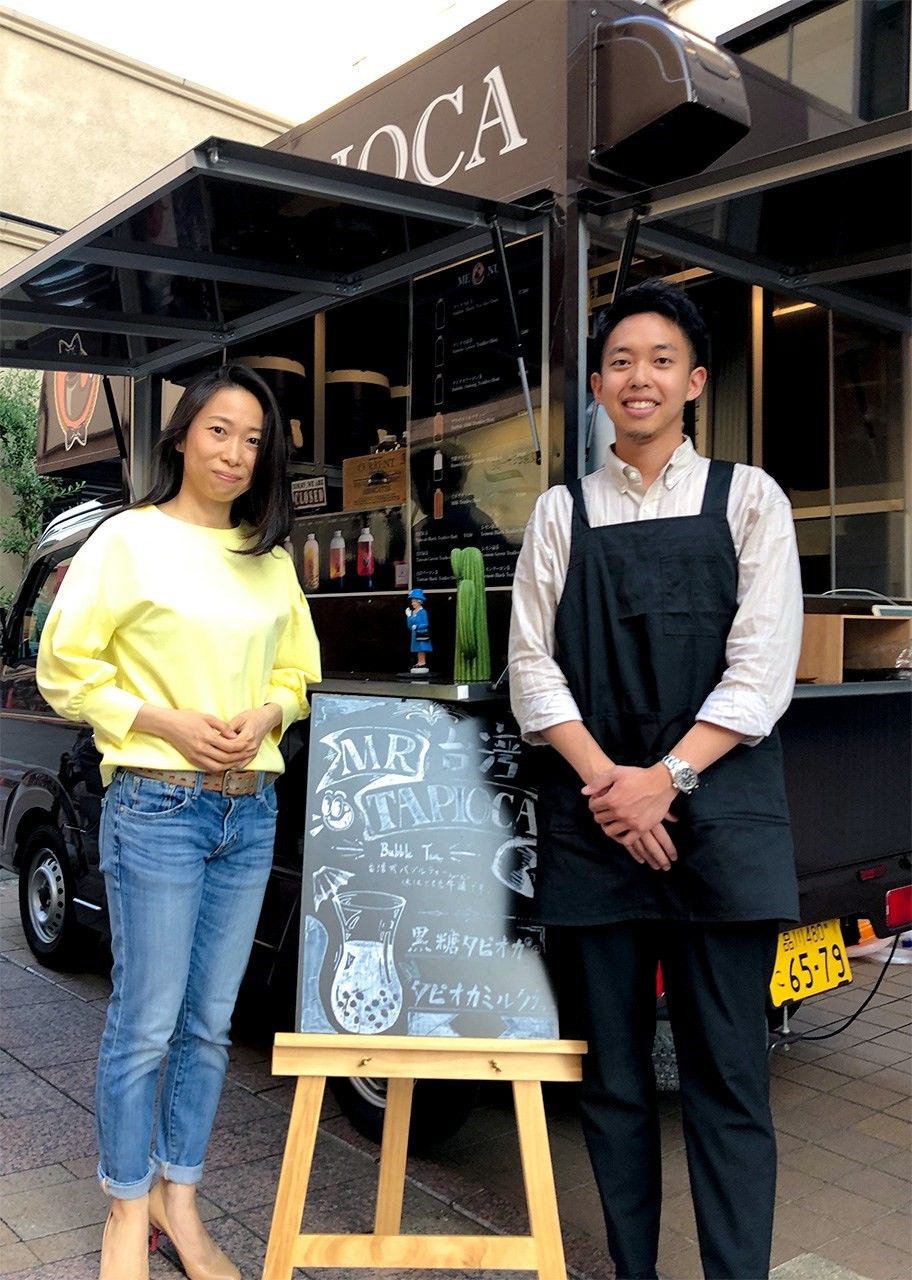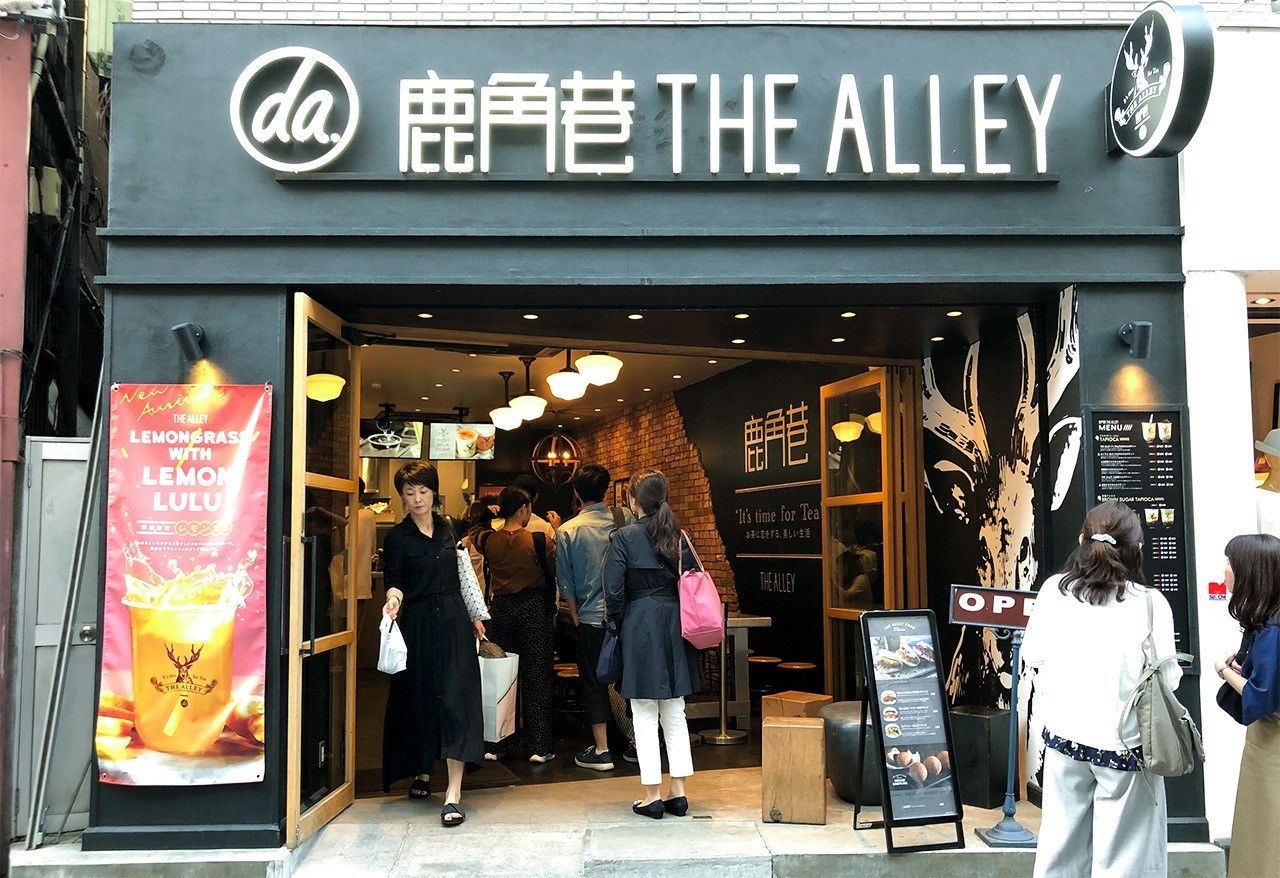
Mr. Tapioca: An Authentic Taste of Taiwan Gains a Foothold in Tokyo’s Jiyūgaoka
Food and Drink Lifestyle- English
- 日本語
- 简体字
- 繁體字
- Français
- Español
- العربية
- Русский
Bubble Tea Boom Hits Japan
Perhaps it is a sign of Japan’s declining population, but people nowadays are not lining up at restaurants and food shops as much as they used to. That is, unless it is for bubble tea. Late in the afternoon when school has ended, customers converge on shops dispensing the sweet tapioca-laden drinks. Sometimes, especially weekends and holidays, the lines are such that security guards are needed to keep the way clear for pedestrians.
Japan’s boom in bubble tea has been extensively covered in magazines and online. A popular television program even recently ran a special segment on tapioca drinks that showed throngs of customers, clear plastic cup in hand and thick straw to their lips, sucking up the dark, chewy tapioca pearls.
Tokyo has dozens of bubble tea shops, mainly in city-center hubs like Shinjuku and Shibuya where teens congregate. But shops are also springing up in suburban locations like Shinkoiwa and Machida where the clientele is more likely to be young families. The tapioca tea wave has even come to my neighborhood of Jiyūgaoka, a place known for its trendy cafés and knick-knack shops. The stores here range from tiny outlets wedged between buildings on a side street to chains occupying prime station-front real estate.
Meet Mr. Tapioca
The other day while out strolling around I spotted a food truck on one of Jiyūgaoka’s back streets, the words “Mr. Tapioca” and “Taiwan” printed on a blackboard sign catching my eye. I was not particularly in the mood to buy a drink, but I approached the food truck and asked a young man standing nearby if he was the manager. “No,” he answered. “The manager’s inside the truck. He’s Taiwanese.”
Glancing inside, I could see a good-looking man scooping up ladles full of tapioca from a vat. A bit bashfully, he introduced himself as Xie Wensen. The first man I had spoken to was Xie’s Japanese friend and partner in the business.
Xie, a 30-year-old native of Miaoli in Taiwan, tells me that after graduating from pharmacy school and spending time working at a hospital he came to Japan to learn the language. Although he finished his Japanese classes, he was not ready to head home and so decided to stay in Japan a while longer. Not fluent enough in Japanese to get a job at a regular company, Xie thought of starting some kind of Taiwan-related business and hit on the idea of bubble tea.
Actually, Xie had started thinking about opening a tapioca tea shop two years before the current boom hit Japan. He wanted to set up as soon as possible, but being a novice in business and cautious by nature, he decided to return to Taiwan temporarily to learn about tea and tapioca from experts there.
He says he was disappointed to discover that even in Taiwan, the birthplace of bubble tea, many chain operators cut costs by sourcing cheap tea leaves and tapioca from Southeast Asian countries. Wanting to make an authentically Taiwanese product, he decided to obtain all his ingredients, from tea leaves to tapioca, from Taiwan. He explains how given his background as a pharmacist, he was excited at the thought of using only top-class ingredients for his product.
As we chatted, a steady stream of customers came up to the truck, and Xie rushed back inside to handle their orders. He pierced the paper seals on individual plastic bottles, inserted funnels, and efficiently filled each with tapioca while preparing mixtures of milk and Taiwanese oolong tea, green tea, or black tea, according to customers’ orders. A serious look on his face, almost like a pharmacist filling a prescription, he had no time for conversation.
Xie handles each order himself, and there is a limit to how many he can serve each day. Although it is hard work, he is very particular about doing everything by hand and scoffs at the idea of mass producing the drinks.
Menu offerings include brown sugar tapioca milk tea, a top-selling flavor. I order one and am floored when I take my first sip. A robust brown sugar aroma fills my mouth as I enjoy the rich-tasting drink. I really appreciated the quality of the tapioca pearls too, which have a satisfying chewiness.
Although delicious, the drink is a bit sweet for my taste. However, I think young people would thoroughly enjoy it. Keeping my waistline in mind, I order a different tapioca concoction made with Taiwanese green tea.
The drink perfectly combines the astringent flavor of the tea with sweetness, giving it a light, refreshing taste that goes down smoothly. However, in hot weather I prefer bubble tea made without milk so that the tea flavor comes through more prominently.
Aiming for Authenticity
Many bubble tea shops add ice when customers request a cold drink, but Xie refuses to resort to such measures. He also uses just one kind of sweetener. I was a bit bothered that I could not customize my drink, but Xie really cares about preserving the “golden ratio.” I have had tapioca drinks at many different shops, but I can honestly say that Xie’s mixture is carefully calibrated to bring out the best in the ingredients and produce a really tasty milky tea.
Xie confides that his parents were bitterly opposed to his venture in Japan, and even though he wants to expand his business, he cannot count on their financial support. Although he knows it will take time, he admits that one day he would like to operate from a real storefront.
I am a dentist, but I am also an actor and a writer. There was a time when my friends and acquaintances thought it was a pity that I was switching from dentistry, and it was hard to make them understand that I wanted to pursue my dreams. I think Xie feels the same way. The most important thing is to like what you are doing and to feel that it is worthwhile. Besides, I think making tapioca tea suits Xie because of his science background. His single-minded approach to his work reminded me of my own feelings when I changed careers.
Xie’s truck only opened for business in February 2019. At present count there are now 11 other bubble tea shops in and around Jiyūgaoka, six of which are less a year old. That equates to one new shop opening every month, so the competition is fierce. Xie has been surprised at the huge bubble tea boom right now but he is happy at signs that Taiwanese food culture is becoming popular in Japan.
The neighborhood is home to some of Japan’s most popular tapioca tea shops. These include Gong Cha, which has the largest number of branches in Japan and is perpetually thronged with customers, and the Alley Lujiaoxiang, a popular spot where the drinks are Instagram stars. There is also Chakashō, a trendy shop with minimalist décor, and similar sounding Chakōjō, a Jiyūgaoka original that is something of a “destination” spot. Each shop boasts long lines. But since I dislike waiting, I always head for the place that has the shortest line when I crave a tapioca tea.
Right now, Xie’s truck can only serve 70 orders a day, so he is worried about making a profit. Even so, his shop is gradually gaining recognition in the neighborhood, and some mothers go out of their way just to buy tapioca milk, a caffeine-free treat, for their children. Xie knows that the road ahead is tough, but he is determined that one day, he will open a street-level store that will be a symbol of Taiwan.

The Mr. Tapioca food truck and owner Xie Wensen.
(Originally published in Japanese. Banner photo: The Mr. Tapioca sign and a bubble tea. All photos by Hitoto Tae.)

